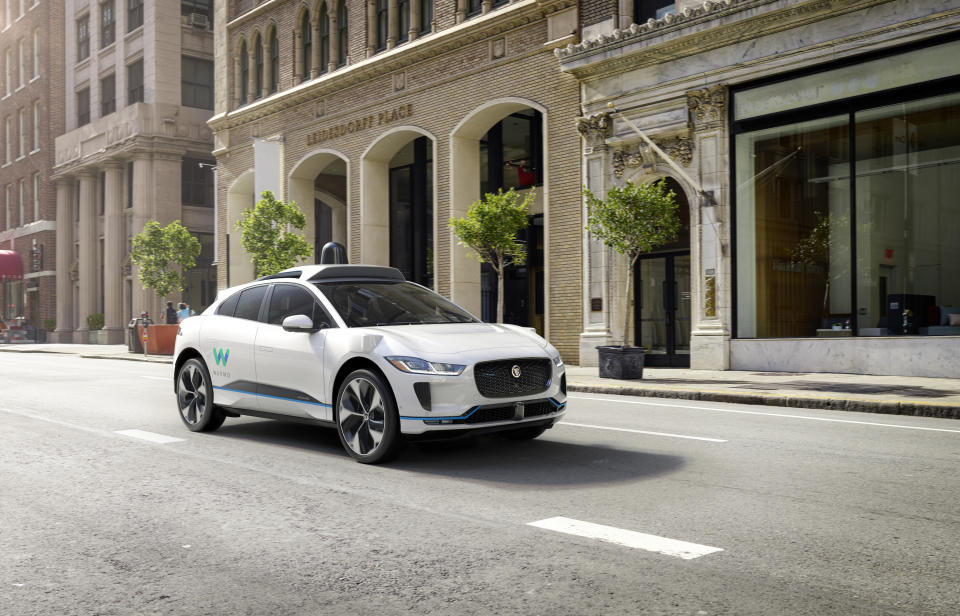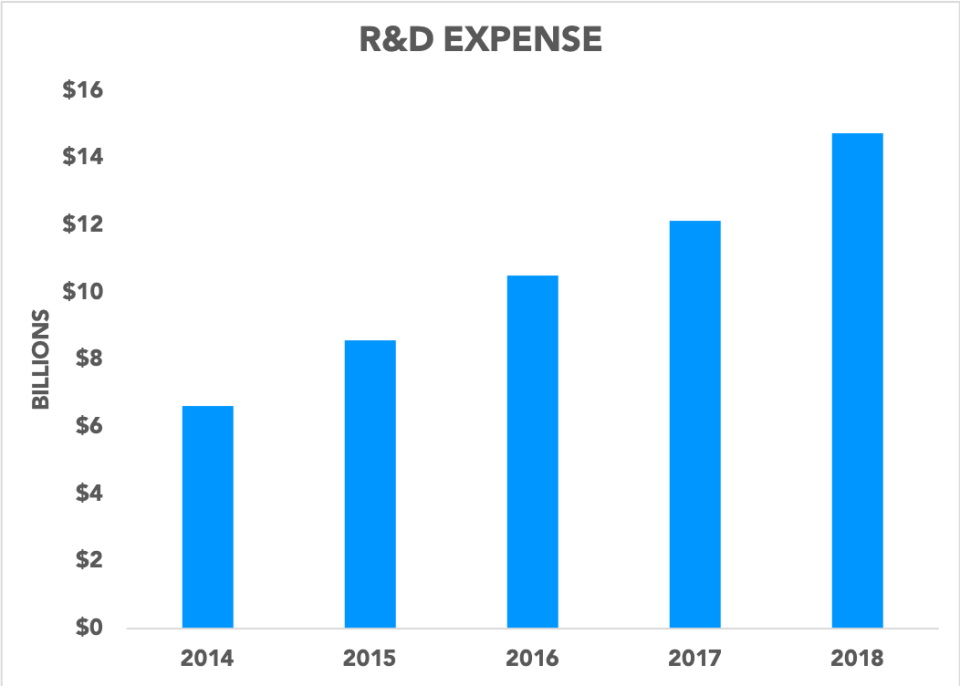Apple Is Getting Serious About Autonomous Vehicle Testing
Apple's (NASDAQ: AAPL) efforts to develop autonomous vehicle technology grew significantly in 2018, despite the division getting hit with a recent round of layoffs. CEO Tim Cook had confirmed in 2017 that the company was "focusing on autonomous systems" and believes self-driving software will end up being "a core technology." Companies that test autonomous vehicles on public roads in California are required to file disengagement reports with the state's Department of Motor Vehicles. A disengagement is when a safety driver takes control over the vehicle, turning off the autonomous system.
The DMV released those reports this week. Here's what they show about Apple's Project Titan.

A Waymo autonomous Jaguar I-PACE. Image source: Waymo.
Autonomous miles reached nearly 80,000
For 2018, Apple test vehicles recorded 79,745 miles in autonomous mode, compared to just 838 miles in autonomous mode in 2017. That led to 69,510 disengagements, up from 7,074 in 2017. Apple saw a dramatic improvement in its autonomous system, given the reduction in disengagements per mile.
Year | Disengagements | Miles | Disengagements per Mile |
|---|---|---|---|
2017 | 7,074 | 838 | 8.44 |
2018 | 69,510 | 79,745 | 0.87 |
Data source: California DMV.
Disengagements per mile are just one metric that can be used to gauge the safety of an autonomous system, and can only be loosely compared to other companies due to fundamental differences in how each company is approaching development, as well as how they define a disengagement.
In a letter to the DMV, Apple says its "approach to disengagements is conservative," and that it started to categorize disengagements "in greater detail" starting in July 2018. The Mac maker added a new category for "Important Disengagements," which Apple defines as "situations that might have resulted in a safety-related event or a violation of the rules of the road."
Alphabet (NASDAQ: GOOG) (NASDAQ: GOOGL) subsidiary Waymo has quite a lead in autonomous driving technology, having started the project a decade ago. Waymo published a blog post this week to discuss its disengagement reports, noting that its disengagements per mile fell by 50% in 2018 to one disengagement per 11,017 autonomous miles -- or a rate of 0.00009 disengagements per mile. Waymo logged 1.2 million autonomous miles in California last year, more than tripling the distance traveled autonomously in 2017.
Tesla (NASDAQ: TSLA), another major player in the development of semi-autonomous and autonomous vehicles, does not test vehicles on public roads in California. Instead, the electric-car maker develops its technology using simulation, test tracks, and public roads outside of California. Tesla simulates autonomous driving in the background in customer vehicles, which the company refers to as "shadow mode." The company says its customer fleet has driven over 1 billion miles using its Autopilot semi-autonomous driving system. Autopilot, while always controversial, came under renewed scrutiny last week after third-party researcher Quality Control Systems disputed Tesla's claim that Autosteer reduced collisions by 40% after securing the underlying data through a Freedom of Information Act request.
Research and development expenses are on the rise
Apple's R&D expenses have been steadily climbing over the past five years, as the company continues to push deeper into new product categories like wearables and bring the development of core technologies in-house. Developing proprietary chips is incredibly expensive, as is working on autonomous vehicle technology.

Data source: SEC filings. Chart by author. Calendar years shown.
For example, Apple's autonomous testing fleet in California now totals 62 vehicles, up from just eight in 2017, based on the VIN numbers that the company reported. Some of those prototypes drove as few as 2 autonomous miles last year. Still, the biggest question regarding the tech titan's autonomous vehicle ambitions remains how it plans to bring its technology to market.
More From The Motley Fool
Suzanne Frey, an executive at Alphabet, is a member of The Motley Fool's board of directors. Evan Niu, CFA owns shares of Apple and Tesla. The Motley Fool owns shares of and recommends Alphabet (A shares), Alphabet (C shares), Apple, and Tesla. The Motley Fool has the following options: long January 2020 $150 calls on Apple and short January 2020 $155 calls on Apple. The Motley Fool has a disclosure policy.

 Yahoo Finance
Yahoo Finance 